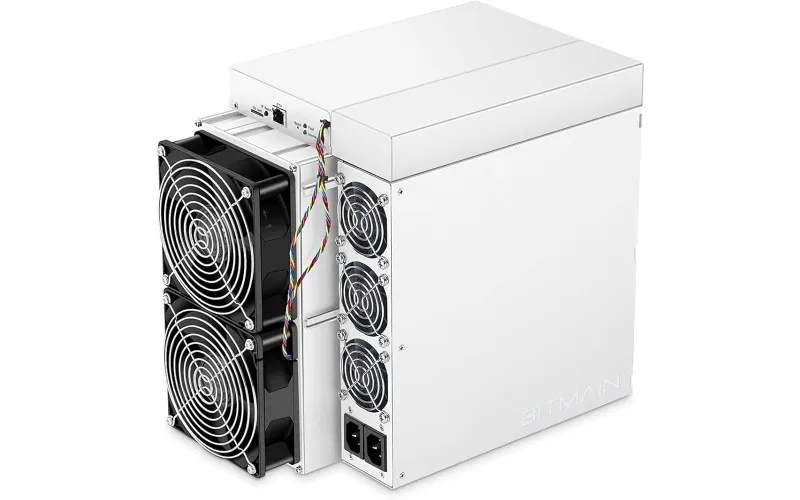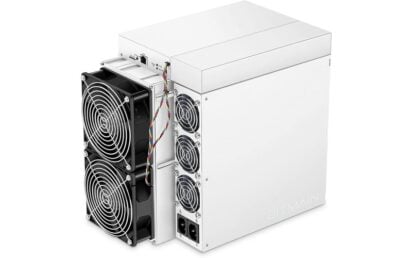Bitcoin mining has come a long way from being a hobbyist’s side project to a multi-billion-dollar industry. Miners today face fierce competition, high electricity costs, and volatile market conditions. The Antminer S19 series, developed by Bitmain, stands out as one of the most powerful and efficient mining rigs available. However, efficiency alone doesn’t guarantee profitability.
This article explores how power consumption, electricity prices, and market trends affect the bottom line of Antminer S19 users and provides practical strategies to enhance profitability.
BiXBiT Firmware for Enhanced Efficiency
Before we dive into numbers, one way miners can boost efficiency is by using BiXBiT firmware. Custom firmware can reduce power consumption, improve stability, and optimize mining parameters for greater efficiency.
Understanding the Antminer S19 Series
Bitcoin miners must carefully consider efficiency before investing in mining hardware. Below is a breakdown of Antminer S19 models based on their hashrate, power consumption, and efficiency.
| Model | Hashrate | Power Consumption | Efficiency |
| Antminer S19 | 95 TH/s | 3,250W | 34.21 J/TH |
| Antminer S19 Pro | 110 TH/s | 3,250W | 29.55 J/TH |
| Antminer S19j Pro | 104 TH/s | 3,068W | 29.50 J/TH |
| Antminer S19 XP | 141 TH/s | 3,010W | 21.35 J/TH |
For more insights into ASIC miner efficiency, visit Hashrate Index.
Electricity Consumption & Its Impact on Profitability
Why Electricity Matters
Electricity is the largest cost for Bitcoin miners, accounting for 60-80% of operational expenses. Bitcoin’s Proof-of-Work mechanism requires vast amounts of computational power, making power efficiency a critical factor for profitability.
According to the Cambridge Bitcoin Electricity Consumption Index, the entire Bitcoin network consumes over 100 terawatt-hours annually, equivalent to a small country’s electricity usage.
How to Calculate Power Costs
Electricity expenses depend on hardware power consumption and local energy prices. Here’s a simple formula to estimate power costs:
Example: Antminer S19 XP Electricity Usage
- Power Consumption: 3,010W
- Daily Energy Use: (3,010 ÷ 1000) × 24 = 72.24 kWh/day
- Monthly Energy Use: 72.24 × 30 = 2,167.2 kWh/month
If electricity costs $0.12 per kWh, the monthly electricity bill would be:
For updated energy price comparisons, visit Global Energy Prices.
How Market Trends Affect Profitability
Bitcoin mining profitability fluctuates due to network difficulty, Bitcoin’s price, and electricity costs.
Mining Revenue & Bitcoin Price Swings
Miners earn Bitcoin as block rewards and transaction fees. However, Bitcoin price volatility greatly impacts earnings. At $40,000 per BTC, an Antminer S19 XP mining 0.00035 BTC per day earns $14 per day.
If Bitcoin’s price drops to $30,000, daily revenue falls to $10.50 per day, extending the ROI period.
For real-time Bitcoin price updates, visit CoinGecko.
Bitcoin Mining Difficulty & Halving Events
Every 2016 blocks (~2 weeks), Bitcoin adjusts mining difficulty based on the total network hashrate. A higher difficulty means lower rewards per miner. Additionally, Bitcoin’s halving events, which occur every four years, reduce block rewards by 50%, making mining profitability harder to sustain.
Strategies to Increase Mining Profitability
Maintaining Equipment for Longevity
In the high-stakes world of Bitcoin mining, proper maintenance can mean the difference between sustained profitability and early hardware failure. With thousands of dollars invested in ASIC rigs, miners must ensure their machines run smoothly for years.
- Keep it clean: Dust buildup is one of the most common causes of overheating and hardware inefficiency. Miners should regularly clean air filters, fans, and vents to maintain proper airflow and prevent excessive temperature spikes.
- Monitor temperature levels: Bitcoin mining rigs generate immense heat. Ideally, ASIC miners should be kept in climate-controlled environments where temperatures remain stable. Running rigs too hot can shorten their lifespan.
- Use high-quality power supplies: A reliable power supply unit (PSU) prevents voltage fluctuations that could damage mining hardware. Investing in gold or platinum-rated PSUs can reduce energy waste and extend the lifespan of mining rigs.
- Apply firmware updates: Keeping mining software up to date is crucial for maximizing efficiency. Bitmain and third-party developers regularly release firmware updates that optimize power consumption and improve performance.
- Check hash rates regularly: A sudden drop in hash rate can indicate underlying hardware problems, faulty cables, or unstable internet connections. Miners should use monitoring tools like BiXBiT’s to keep track of performance.
- Prevent electrical failures: Power surges and outages can damage ASICs. Installing surge protectors and battery backups can help prevent sudden shutdowns that could corrupt firmware or damage critical components.
Interestingly, a well-maintained ASIC miner can operate efficiently for over five years, whereas poorly maintained hardware may burn out within two years. In large-scale mining farms, preventive maintenance schedules can reduce downtime by 30% and boost overall efficiency by 15%.
Conclusion
The Antminer S19 series remains a leading choice for Bitcoin miners, but profitability is heavily dependent on electricity costs, hardware efficiency, and Bitcoin price trends.
To maximize long-term returns, miners should:
- Optimize power usage with custom firmware like BiXBiT.
- Monitor Bitcoin price trends (Live BTC updates).
- Consider energy-efficient mining locations.
By employing cost-effective strategies, Bitcoin miners can navigate market fluctuations and achieve consistent profitability.


